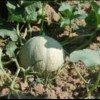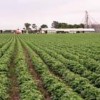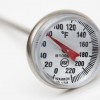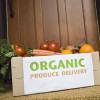 A food is considered genetically modified when its genetic makeup is altered in some way as a result of the use of recombinant DNA biotechnological procedures. These changes result in the expression of attributes not found in the original. Examples include delayed-ripening tomatoes and pest-resistant or herbicide-tolerant crops. Genetic modification can be used to improve crop yields, reduce insecticide use, or increase the nutritional value of foods. This 5-page fact sheet answers questions consumers might have about genetically modified food. Written by Keith R. Schneider, Renée Goodrich Schneider, and Susanna Richardson, and published by the UF Department of Food Science and Human Nutrition, November 2014. (Photo: iStock/Thinkstock.com)
A food is considered genetically modified when its genetic makeup is altered in some way as a result of the use of recombinant DNA biotechnological procedures. These changes result in the expression of attributes not found in the original. Examples include delayed-ripening tomatoes and pest-resistant or herbicide-tolerant crops. Genetic modification can be used to improve crop yields, reduce insecticide use, or increase the nutritional value of foods. This 5-page fact sheet answers questions consumers might have about genetically modified food. Written by Keith R. Schneider, Renée Goodrich Schneider, and Susanna Richardson, and published by the UF Department of Food Science and Human Nutrition, November 2014. (Photo: iStock/Thinkstock.com)
http://edis.ifas.ufl.edu/fs084
Tag: Food Safety
Seguridad Alimentaria: Juegatela seguro con los huevos
 Los huevos frescos pueden contener bacterias que podrían causar una enfermedad llamada salmonelosis. Esta enfermedad causada por alimentos provoca vómito y diarrea. Esta puede ser severa y hasta podría ser fatal para los adultos mayores. Reduzca el riesgo de contraer estas enfermedades causadas por sequir estas pautas. This 2-page fact sheet was written by Linda B. Bobroff y Jennifer Hillan, and published by the UF Department of Family Youth and Community Sciences, October 2013.
Los huevos frescos pueden contener bacterias que podrían causar una enfermedad llamada salmonelosis. Esta enfermedad causada por alimentos provoca vómito y diarrea. Esta puede ser severa y hasta podría ser fatal para los adultos mayores. Reduzca el riesgo de contraer estas enfermedades causadas por sequir estas pautas. This 2-page fact sheet was written by Linda B. Bobroff y Jennifer Hillan, and published by the UF Department of Family Youth and Community Sciences, October 2013.
http://edis.ifas.ufl.edu/fy194
Food Safety: Play it Safe with Eggs
 Fresh eggs may contain bacteria that can cause salmonellosis. This foodborne illness causes vomiting and diarrhea. It can be severe and even fatal in older adults. Reduce your risk for this foodborne illness by following these guidelines. This 1-page fact sheet was written by Linda B. Bobroff and Jennifer Hillan, and published by the UF Department of Family Youth and Community Sciences, June 2013.
Fresh eggs may contain bacteria that can cause salmonellosis. This foodborne illness causes vomiting and diarrhea. It can be severe and even fatal in older adults. Reduce your risk for this foodborne illness by following these guidelines. This 1-page fact sheet was written by Linda B. Bobroff and Jennifer Hillan, and published by the UF Department of Family Youth and Community Sciences, June 2013.
http://edis.ifas.ufl.edu/fy193
Melons: Safe Handling Practices for Consumers
 Since most of us buy melons at the store or farmers market, it is easy to forget that most melons are grown on the ground. Watermelons, cantaloupe, and honeydew melon are the most popular varieties of melons in the United States. Because they are exposed to pests and microorganisms from dirt, it is very important to apply the best food safety practices before enjoying them.This 3-page fact sheet was written by Amy Simonne, and published by the UF Department of Family Youth and Community Sciences, June 2013.
Since most of us buy melons at the store or farmers market, it is easy to forget that most melons are grown on the ground. Watermelons, cantaloupe, and honeydew melon are the most popular varieties of melons in the United States. Because they are exposed to pests and microorganisms from dirt, it is very important to apply the best food safety practices before enjoying them.This 3-page fact sheet was written by Amy Simonne, and published by the UF Department of Family Youth and Community Sciences, June 2013.
http://edis.ifas.ufl.edu/fy488
Salmonella y Escherichia coli enteropatogena en el ambiente de produccion de cultivos: fuentes potenciales, supervivencia y gestion (SL375Span/SS577)
 El objetivo de esta publicación EDIS es poner en evidencia los descubrimientos recientes que se enfocan en la ecología de los patógenos humanos en el área de producción de cultivo. Una mejor comprensión de cómo los patógenos persisten fuera de los huéspedes animales en el agua para la agricultura, en el suelo y en las plantas, tendrá grandes impactos en el manejo y procesamiento de los productos mismos, empezando desde el productor y hasta el consumidor. This 3-page fact sheet was written by Massimiliano Marvasi, Max Teplitski, Andrée George, and George Hochmuth, and published by the UF Department of Soil and Water Science, November 2012.
El objetivo de esta publicación EDIS es poner en evidencia los descubrimientos recientes que se enfocan en la ecología de los patógenos humanos en el área de producción de cultivo. Una mejor comprensión de cómo los patógenos persisten fuera de los huéspedes animales en el agua para la agricultura, en el suelo y en las plantas, tendrá grandes impactos en el manejo y procesamiento de los productos mismos, empezando desde el productor y hasta el consumidor. This 3-page fact sheet was written by Massimiliano Marvasi, Max Teplitski, Andrée George, and George Hochmuth, and published by the UF Department of Soil and Water Science, November 2012.
http://edis.ifas.ufl.edu/ss577
Mantener los alimentos seguros: Escoger y usar termometros en casa (FCS1083Span/FY1296)
 “La cocción apropiada de los alimentos a la temperatura interna segura es una de las formas más efectivas de prevenir las enfermedades transmitidas por los alimentos. Existe una gran variedad de termómetros para comprar y seleccionar el correcto para cuando cocine en casa de manera que usted y su familia estén seguros. Esta publicación proveerá información específica de cómo usar los diferentes termómetros en diferentes alimentos.” This 3-page fact sheet was written by Claudia Peñuela, Amarat Simonne e Isabel Valentin-Oquendo, and published by the UF Department of Family Youth and Community Sciences, September 2012.
“La cocción apropiada de los alimentos a la temperatura interna segura es una de las formas más efectivas de prevenir las enfermedades transmitidas por los alimentos. Existe una gran variedad de termómetros para comprar y seleccionar el correcto para cuando cocine en casa de manera que usted y su familia estén seguros. Esta publicación proveerá información específica de cómo usar los diferentes termómetros en diferentes alimentos.” This 3-page fact sheet was written by Claudia Peñuela, Amarat Simonne e Isabel Valentin-Oquendo, and published by the UF Department of Family Youth and Community Sciences, September 2012.
http://edis.ifas.ufl.edu/fy1296
Should We Go Organic? (FAR8048/FM357)
 “Choosing what to feed my family is no easy task. In addition to seeking meals that can be ready for our harried schedules and differing tastes, today when I go to the grocery store I also have to make decisions about whether or not to buy organically grown or raised foods. Many consumers worry that pesticides used in conventionally grown produce may increase our risk of cancer. But is this concern based in reality?” This 2-page fact sheet was written by Kate Welch, Linda Bobroff, and Amy Simonne, and published by the UF Department of Family Youth and Community Sciences, August 2012.
“Choosing what to feed my family is no easy task. In addition to seeking meals that can be ready for our harried schedules and differing tastes, today when I go to the grocery store I also have to make decisions about whether or not to buy organically grown or raised foods. Many consumers worry that pesticides used in conventionally grown produce may increase our risk of cancer. But is this concern based in reality?” This 2-page fact sheet was written by Kate Welch, Linda Bobroff, and Amy Simonne, and published by the UF Department of Family Youth and Community Sciences, August 2012.
http://edis.ifas.ufl.edu/fm357
Breastfeeding during Disaster (FAR0430/FM429)
 “As we’ve learned over the past couple of years, disaster can strike anyone, anywhere, and anytime. A natural disaster, whether hurricane, tornado, flood, or tsunami, can devastate areas and leave families without resources, sometimes for long periods of time. And while people of all ages suffer, infants can be at far greater risk. However, mothers can save their infants’ lives and protect them from illness by simply breastfeeding, even if they haven’t been breastfeeding their baby.” This 2-page Family Album Radio transcript was written by Donna Davis, and published by the UF Department of Family Youth and Community Sciences, July 2012.
“As we’ve learned over the past couple of years, disaster can strike anyone, anywhere, and anytime. A natural disaster, whether hurricane, tornado, flood, or tsunami, can devastate areas and leave families without resources, sometimes for long periods of time. And while people of all ages suffer, infants can be at far greater risk. However, mothers can save their infants’ lives and protect them from illness by simply breastfeeding, even if they haven’t been breastfeeding their baby.” This 2-page Family Album Radio transcript was written by Donna Davis, and published by the UF Department of Family Youth and Community Sciences, July 2012.
http://edis.ifas.ufl.edu/fm429
Keeping Food Safe: Special Tips for Potluck Parties (FCS8999/FY1287)
 Potluck parties are very popular in the United States because they allow people to share responsibility of cooking and food preparation. While it’s wonderful to be able to share favorite recipes with friends and to have the opportunity to eat a variety of foods without much cost, potluck meals are also associated with an increased risk of foodborne illness. To decrease your risk of foodborne illness, itis very important to follow the “two-hour rule” and refrigerate all prepared foods within two hours of purchasing or cooking. Read this 2-page fact sheet for more potluck food safety tips. Written by Claudia Peñuela and Amarat Simonne and published by the UF Department of Family Youth and Community Sciences, March 2012.
Potluck parties are very popular in the United States because they allow people to share responsibility of cooking and food preparation. While it’s wonderful to be able to share favorite recipes with friends and to have the opportunity to eat a variety of foods without much cost, potluck meals are also associated with an increased risk of foodborne illness. To decrease your risk of foodborne illness, itis very important to follow the “two-hour rule” and refrigerate all prepared foods within two hours of purchasing or cooking. Read this 2-page fact sheet for more potluck food safety tips. Written by Claudia Peñuela and Amarat Simonne and published by the UF Department of Family Youth and Community Sciences, March 2012.
http://edis.ifas.ufl.edu/fy1287
Keeping Food Safe: Shopping and Transporting Foods (FCS80003/FY1290)
 Grocery shopping can be an entertaining activity, but effective shopping involves lots of planning and organization, depending on individual needs and choices in different grocery stores. Good planning and organization can save money and time. Have you ever wondered if you follow safe food handling practices when you buy and transport food? Follow the key guidelines in this 2-page fact sheet to protect yourself and your family! Written by Claudia Peñuela and Amarat Simonne, and published by the UF Department of Family Youth and Community Sciences, March 2012.
Grocery shopping can be an entertaining activity, but effective shopping involves lots of planning and organization, depending on individual needs and choices in different grocery stores. Good planning and organization can save money and time. Have you ever wondered if you follow safe food handling practices when you buy and transport food? Follow the key guidelines in this 2-page fact sheet to protect yourself and your family! Written by Claudia Peñuela and Amarat Simonne, and published by the UF Department of Family Youth and Community Sciences, March 2012.
http://edis.ifas.ufl.edu/fy1290
Keeping Food Safe: Preparing and Cooking (FCS80001/FY1288)
 Food preparation and cooking can be fun and rewarding for many reasons. Well-prepared meals can save money and meet nutritional needs, and making safe and healthy meals a part of your lifestyle can contribute to lower healthcare costs. But many people with busy schedules find it difficult to make time to cook meals. And when we are rushed, we may not pay close attention to good food safety practices. It is very important to follow food safety guidelines during food preparation and cooking in order to reduce the risk of foodborne illness for you and your loved ones. Read this 3-page fact sheet to learn more about food safety during food preparation and cooking. Written by Claudia Peñuela and Amarat Simonne and published by the UF Department of Family Youth and Community Sciences, March 2012.
Food preparation and cooking can be fun and rewarding for many reasons. Well-prepared meals can save money and meet nutritional needs, and making safe and healthy meals a part of your lifestyle can contribute to lower healthcare costs. But many people with busy schedules find it difficult to make time to cook meals. And when we are rushed, we may not pay close attention to good food safety practices. It is very important to follow food safety guidelines during food preparation and cooking in order to reduce the risk of foodborne illness for you and your loved ones. Read this 3-page fact sheet to learn more about food safety during food preparation and cooking. Written by Claudia Peñuela and Amarat Simonne and published by the UF Department of Family Youth and Community Sciences, March 2012.
http://edis.ifas.ufl.edu/fy1288
Manteniendo los alimentos seguros: Almacenamiento apropiado (FCS80002Span/FY1294)
 Según el Centro de Prevención y Control de Enfermedades (CDC, por sus siglas en inglés), el almacenamiento inapropiado de los alimentos es uno de los principales riesgos para la seguridad alimentaria que por cierto es fácil de prevenir. ¿Se ha preguntado si está almacenando de forma apropiada y segura los alimentos? Compare sus prácticas con las siguientes guías. This 2-page fact sheet was written by Claudia Peñuela and Amarat Simonne, and published by the UF Department of Family Youth and Community Sciences, March 2012.
Según el Centro de Prevención y Control de Enfermedades (CDC, por sus siglas en inglés), el almacenamiento inapropiado de los alimentos es uno de los principales riesgos para la seguridad alimentaria que por cierto es fácil de prevenir. ¿Se ha preguntado si está almacenando de forma apropiada y segura los alimentos? Compare sus prácticas con las siguientes guías. This 2-page fact sheet was written by Claudia Peñuela and Amarat Simonne, and published by the UF Department of Family Youth and Community Sciences, March 2012.
http://edis.ifas.ufl.edu/fy1294
Manteniendo los alimentos seguros: Preparando y cocinando (FCS80001Span/FY1292)
 Sin embargo, mucha gente con una agenda ocupada encuentra difícil sacar tiempo para preparar comidas; además no ponen mucho cuidado a las prácticas de seguridad alimentaria. Es muy importante seguir las guías de seguridad alimentaria mientras prepara y cocina para reducir los riesgos de enfermedades transmitidas por los alimentos para usted y sus seres queridos. This 3-page fact sheet was written by Claudia Peñuela y Amarat Simonne, and published by the UF Department of Family Youth and Community Sciences, March 2012.
Sin embargo, mucha gente con una agenda ocupada encuentra difícil sacar tiempo para preparar comidas; además no ponen mucho cuidado a las prácticas de seguridad alimentaria. Es muy importante seguir las guías de seguridad alimentaria mientras prepara y cocina para reducir los riesgos de enfermedades transmitidas por los alimentos para usted y sus seres queridos. This 3-page fact sheet was written by Claudia Peñuela y Amarat Simonne, and published by the UF Department of Family Youth and Community Sciences, March 2012.
http://edis.ifas.ufl.edu/fy1292
Manteniendo los alimentos seguros: Consejos especiales para las fiestas “Potluck” (FCS8999Span/FY1291)
 Las fiestas/reuniones “Potluck” son muy populares en los Estados Unidos porque permiten a la gente compartir la responsabilidad de preparar y cocinar. A pesar de que es maravilloso compartir las recetas favoritas y comer una variedad de comidas a bajo costo, estas comidas están asociadas con un aumento de enfermedades transmitidas por los alimentos. This 3-page fact sheet was written by Claudia Peñuela and Amarat Simonne, and published by the UF Department of Family Youth and Community Sciences, July 2011.
Las fiestas/reuniones “Potluck” son muy populares en los Estados Unidos porque permiten a la gente compartir la responsabilidad de preparar y cocinar. A pesar de que es maravilloso compartir las recetas favoritas y comer una variedad de comidas a bajo costo, estas comidas están asociadas con un aumento de enfermedades transmitidas por los alimentos. This 3-page fact sheet was written by Claudia Peñuela and Amarat Simonne, and published by the UF Department of Family Youth and Community Sciences, July 2011.
http://edis.ifas.ufl.edu/fy1291
Manteniendo los alimentos seguros: Compra y transporte de alimentos (FCS80003Span/FY1293)
 Ir al supermercado puede ser una actividad entretenida, pero una compra efectiva implica mucha planificación y organización dependiendo de las necesidades individuales y opciones en los diferentes supermercados. Una buena planificación y organización ahorra dinero. Se ha preguntado alguna vez si sigue las prácticas de manipulación de alimentos en forma segura cuando compra y transporta alimentos. ¡Practique las siguientes guías para la protección suya y de su familia!
Ir al supermercado puede ser una actividad entretenida, pero una compra efectiva implica mucha planificación y organización dependiendo de las necesidades individuales y opciones en los diferentes supermercados. Una buena planificación y organización ahorra dinero. Se ha preguntado alguna vez si sigue las prácticas de manipulación de alimentos en forma segura cuando compra y transporta alimentos. ¡Practique las siguientes guías para la protección suya y de su familia!
This 2-page fact sheet is the Spanish language version of “Keeping Food Safe: Shopping and Transporting Foods.” It was written by Claudia Peñuela and Amarat Simonne, and published by the UF Department of Family Youth and Community Sciences, March 2012.
http://edis.ifas.ufl.edu/fy1293
Keeping Food Safe: Proper Storage (FCS80002/FY1289)
 According to the Centers for Disease Control and Prevention (CDC), the improper storage of food is one of the major food safety risks that is easily preventable. Have you ever wondered if you are storing food properly and safely? Compare your practices to the following guidelines. This 5-page fact sheet was written by Claudia Peñuela and Amarat Simonne, and published by the UF Department of Family Youth and Community Sciences, March 2012.
According to the Centers for Disease Control and Prevention (CDC), the improper storage of food is one of the major food safety risks that is easily preventable. Have you ever wondered if you are storing food properly and safely? Compare your practices to the following guidelines. This 5-page fact sheet was written by Claudia Peñuela and Amarat Simonne, and published by the UF Department of Family Youth and Community Sciences, March 2012.
http://edis.ifas.ufl.edu/fy1289
Raw Milk: Fact or Fiction (FCS80004/FY1295)
 The use of raw milk as a beverage for humans is a hotly debated topic. A simple Internet search using the term “raw milk” yields conflicting claims about its benefits and dangers. Many people base their opinions about raw milk on myths rather than facts. Not knowing the risks may lead people to drink raw milk and risk illness from harmful bacteria. If you are thinking about adding raw milk to your diet, or if you are curious about the debate, then this 5-page fact sheet will help you sort through the myths and facts of the raw milk debate. Written by Michelle A. Zitt, Ron Schmidt, and Karla P. Shelnutt, and published by the UF Department of Family Youth and Community Sciences, March 2012.
The use of raw milk as a beverage for humans is a hotly debated topic. A simple Internet search using the term “raw milk” yields conflicting claims about its benefits and dangers. Many people base their opinions about raw milk on myths rather than facts. Not knowing the risks may lead people to drink raw milk and risk illness from harmful bacteria. If you are thinking about adding raw milk to your diet, or if you are curious about the debate, then this 5-page fact sheet will help you sort through the myths and facts of the raw milk debate. Written by Michelle A. Zitt, Ron Schmidt, and Karla P. Shelnutt, and published by the UF Department of Family Youth and Community Sciences, March 2012.
http://edis.ifas.ufl.edu/fy1295
Cleaning and Sanitizing the Kitchen: Using Inexpensive Household Food-Safe Products (FCS8OH2010/FY1280)
Consumers can protect themselves by preventing the spread of germs by both cleaning and sanitizing surfaces where food is prepared. This 3-page fact sheet provides instructions for sanitizing with bleach, vinegar, or hydrogen peroxide; and how to purchase “green” sanitizing products. Written by Janet Buffer, Lydia Medeiros, Mary Schroeder, Patricia Kendall, Jeff LeJeune, and John Sofos; adapted by Amy Simonne for use in Florida with permission, and published by the UF Department of Family Youth and Community Sciences, February 2012.
http://edis.ifas.ufl.edu/fy1280
PI230 Is Our Food Safe from Pesticides?
PI230, a 5-page illustrated fact sheet by Frederick M. Fishel, describes the integrated pest management practices followed by growers of our food supply, how tolerances for pesticides in foods are determined by the EPA, and how annual testing of commodity samples for pesticides is conducted. Published by the UF Department of Agronomy, June 2010.
http://edis.ifas.ufl.edu/pi230
FCS8912-Span/FY1176 Seguridad Alimentaria: Restaurantes y comidas para llevar
FCS8912Span ,a 1-page handout by Jennifer Hillan and Amy Simonne, is the Spanish language version of FCS8912/FY1175 Food Safety: Restaurant and Take-out Foods. It highlights key things to know in order to keep restaurant and take-out foods safe to eat. Published by the UF Department of Family Youth and Community Sciences, June 2010.
http://edis.ifas.ufl.edu/fy1176